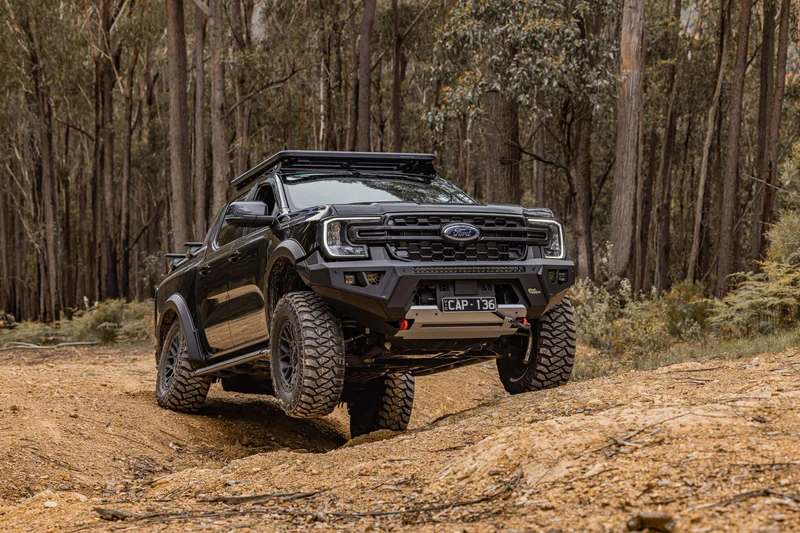The allure of off-road adventures often leads 4WD owners to equip their vehicles with various accessories and gear. However, with every addition, there’s a need to consider the vehicle’s Gross Vehicle Mass (GVM).
Exceeding the GVM not only risks your safety but also leads to legal complications and potential damage to your vehicle. That’s where GVM upgrades come into play. This blog post delves into the importance of 4wd gvm upgrades, what they entail, and why they are essential for anyone serious about off-roading.
What is GVM?
GVM Defined
The Gross Vehicle Mass (GVM) is the maximum weight a vehicle can legally carry. This includes the car, passengers, cargo, and any additional accessories such as bull bars, winches, or roof racks. Exceeding this limit can result in several issues, from legal penalties to compromising the vehicle’s safety and performance.
Understanding the Weight Distribution
Every vehicle has a manufacturer-specified GVM. This figure is based on the vehicle’s design, including the strength of the chassis, suspension system, and overall build. When planning trips, it’s crucial to consider not just the GVM but also how the weight is distributed across the vehicle, as poor distribution can lead to handling issues and increased wear on components.
Why Consider a GVM Upgrade?
Legal Implications
Driving a vehicle that exceeds its GVM is illegal. If caught, you may face fines, and your insurance could be voided in the event of an accident. A GVM upgrade helps ensure your 4WD remains within legal limits, even after adding heavy accessories or towing a trailer.
Safety Concerns
Exceeding your vehicle’s GVM puts undue stress on the suspension, brakes, and other critical components, increasing the risk of mechanical failure. Overloading can also adversely affect handling, making the vehicle less responsive and more challenging to control, especially in off-road conditions.
Improved Vehicle Performance
Upgrading your GVM allows for the safe addition of essential gear and modifications, enabling better vehicle performance and reliability. Whether planning a long outback trip or simply ensuring your 4WD can handle everything you throw at it, a GVM upgrade can make a significant difference.
How is a GVM Upgrade Performed?
Assessment
The first step in a GVM upgrade is thoroughly assessing your vehicle’s current setup. This involves weighing the vehicle with all existing modifications and determining how much extra capacity is needed.
Upgrading the Suspension
A GVM upgrade typically focuses on the suspension system. Heavier-duty springs, shock absorbers, and other components are installed to better support the increased load. This helps maintain the vehicle’s ride height and handling characteristics, even when fully loaded.
Certification
After the upgrade, the vehicle must undergo an inspection to ensure it meets the required safety standards. Once approved, the new GVM is documented, and the car is re-certified with the upgraded specifications. This certification is crucial as it proves that your car is legally compliant with its new GVM.
When Should You Upgrade Your GVM?
Planning Extended Trips
If you’re planning a long trip that requires carrying extra fuel, water, and other supplies, it’s wise to consider a GVM upgrade. Off-road adventures often demand more from your vehicle, and an upgrade ensures you won’t be left stranded due to overloading.
Adding Heavy Accessories
Before installing heavy accessories like winches, roof racks, or bull bars, check your vehicle’s GVM. If the total weight exceeds the limit, upgrading your GVM is necessary to accommodate these additions safely.
Towing Heavy Loads
Towing a caravan, boat, or trailer increases the overall load on your vehicle. A GVM upgrade can provide the additional capacity to pull heavy loads without compromising safety or performance.
Legal and Compliance Considerations
State Regulations
GVM upgrade requirements can vary by state and territory. It’s essential to understand the specific regulations in your area and ensure that any upgrades meet local legal standards. In some regions, you may need to complete the upgrade before registering the vehicle.
Insurance Implications
Not all insurance policies automatically cover vehicles with GVM upgrades. It’s essential to notify your insurer of any modifications to ensure your coverage remains valid. Failing to do so could result in your policy being voided in the event of an accident.
Certification and Documentation
After a GVM upgrade, your vehicle will receive a new compliance plate or sticker that indicates the upgraded GVM. This documentation is vital and must be kept up to date to ensure your vehicle remains road-legal.
Potential Drawbacks of GVM Upgrades
Increased Wear on Components
While a GVM upgrade is designed to handle more weight, it can also lead to increased wear and tear on other parts of the vehicle, such as the engine, transmission, and brakes. Regular maintenance becomes even more critical to ensure the vehicle remains in optimal condition.
Reduced Fuel Efficiency
Carrying additional weight can lead to higher fuel consumption. While the benefits of a GVM upgrade often outweigh this drawback, it’s something to consider when planning your trips, especially in remote areas where fuel availability may be limited.
Cost Considerations
A GVM upgrade is an investment. It involves not just the cost of the parts and labor but also the certification process. However, for those who regularly push their 4WDs to the limit, the benefits far outweigh the costs.
Conclusion
Upgrading your 4WD’s GVM is more than just a legal requirement—it’s a crucial step in ensuring your vehicle’s safety, performance, and reliability. Whether you’re an off-road enthusiast, a long-haul traveller, or simply someone who loves to deck out their 4WD with all the latest gear, understanding and managing your vehicle’s GVM is essential. By considering a GVM upgrade, you can confidently hit the road, knowing your car is up to the challenge of whatever adventure lies ahead.
When planning your next trip or modification, make sure to weigh the benefits and potential drawbacks of a GVM upgrade. With the proper preparation and upgrades, your 4WD can take you anywhere you want to go, safely and legally.






